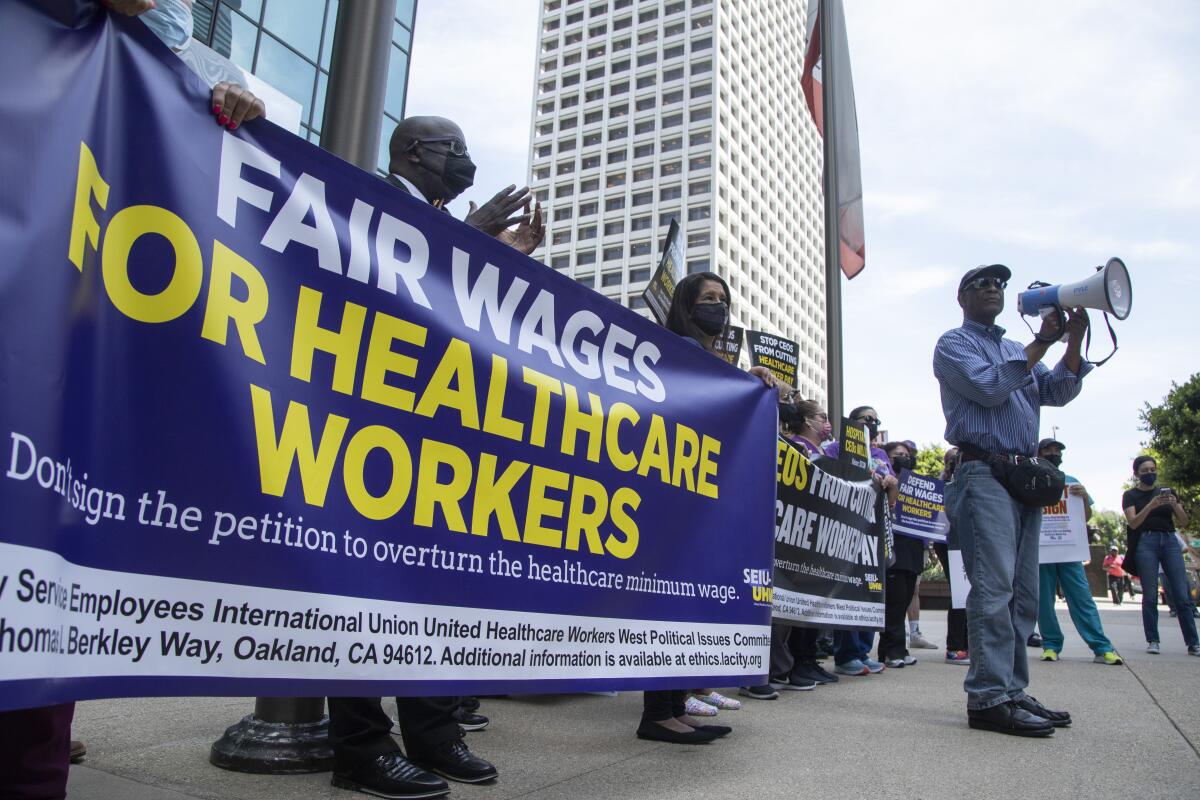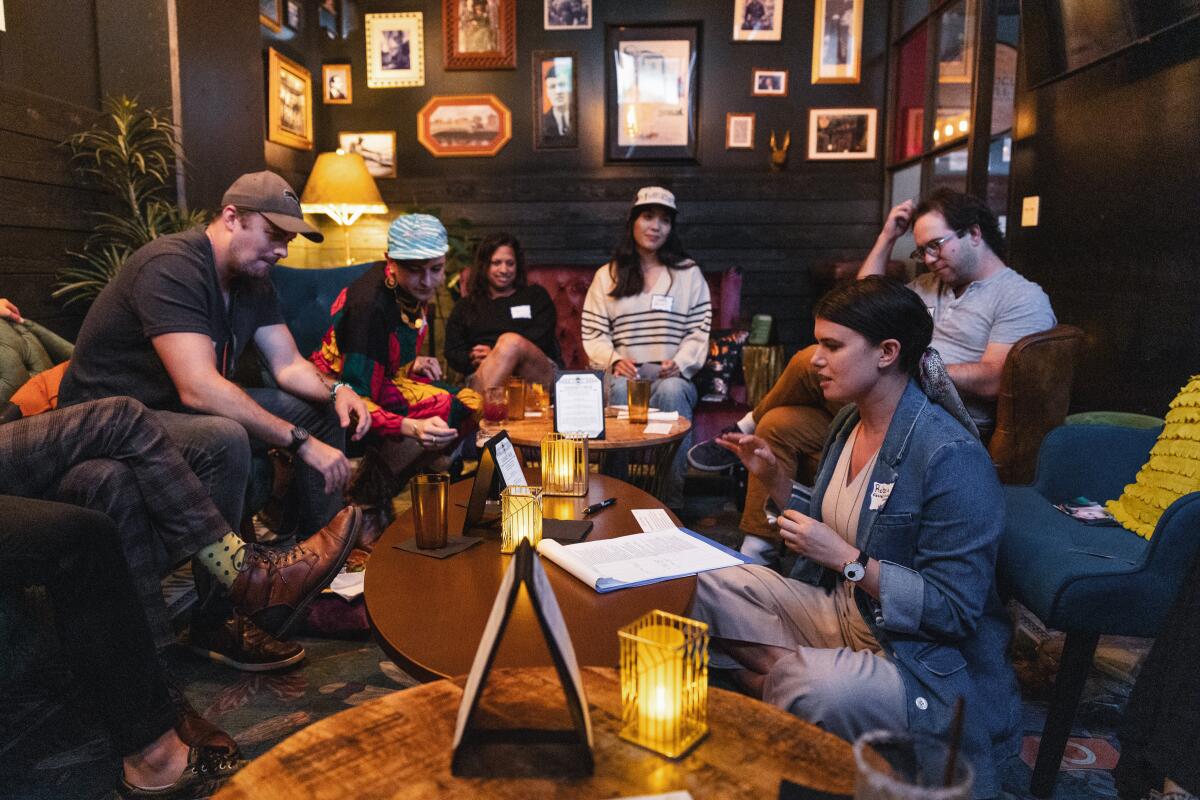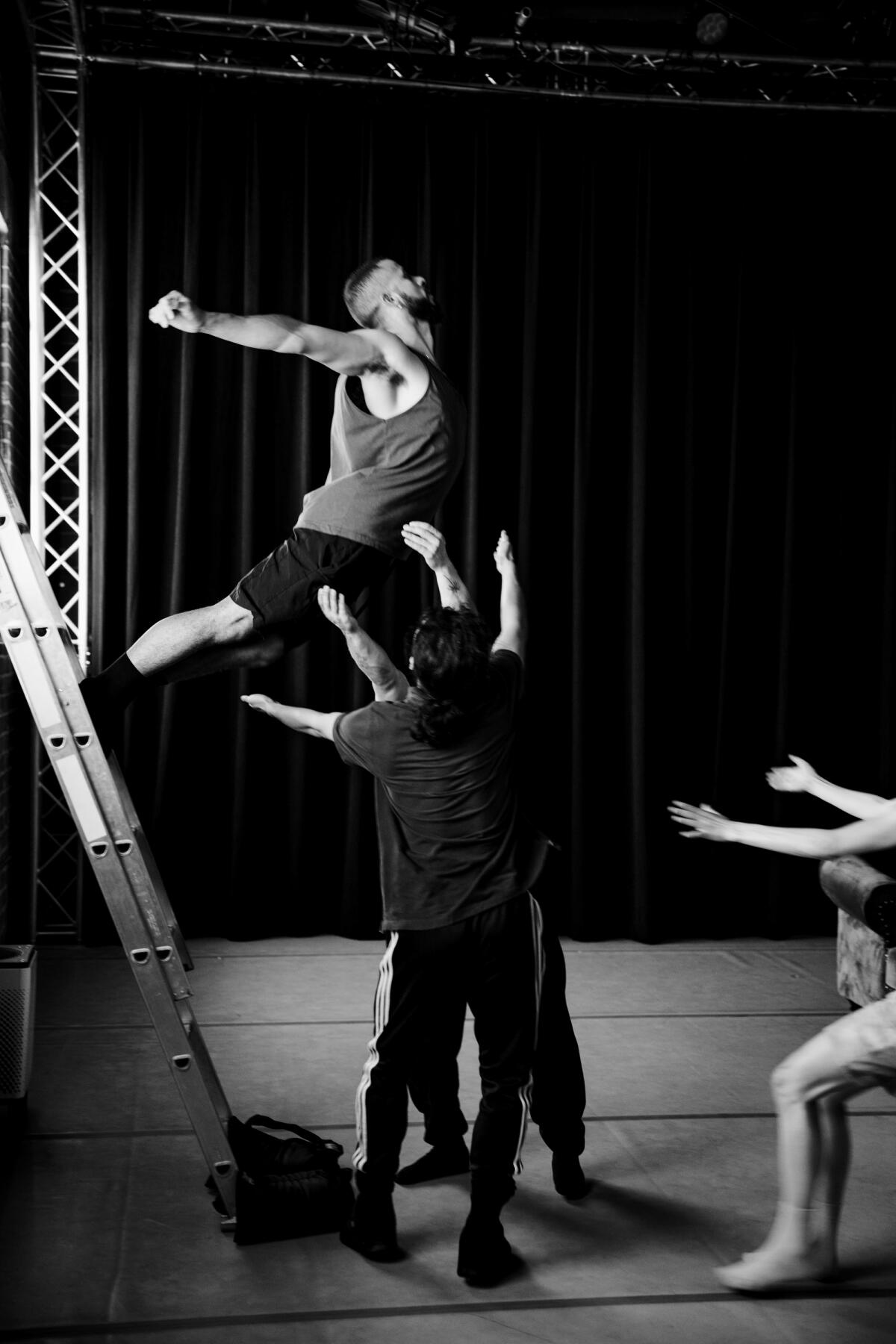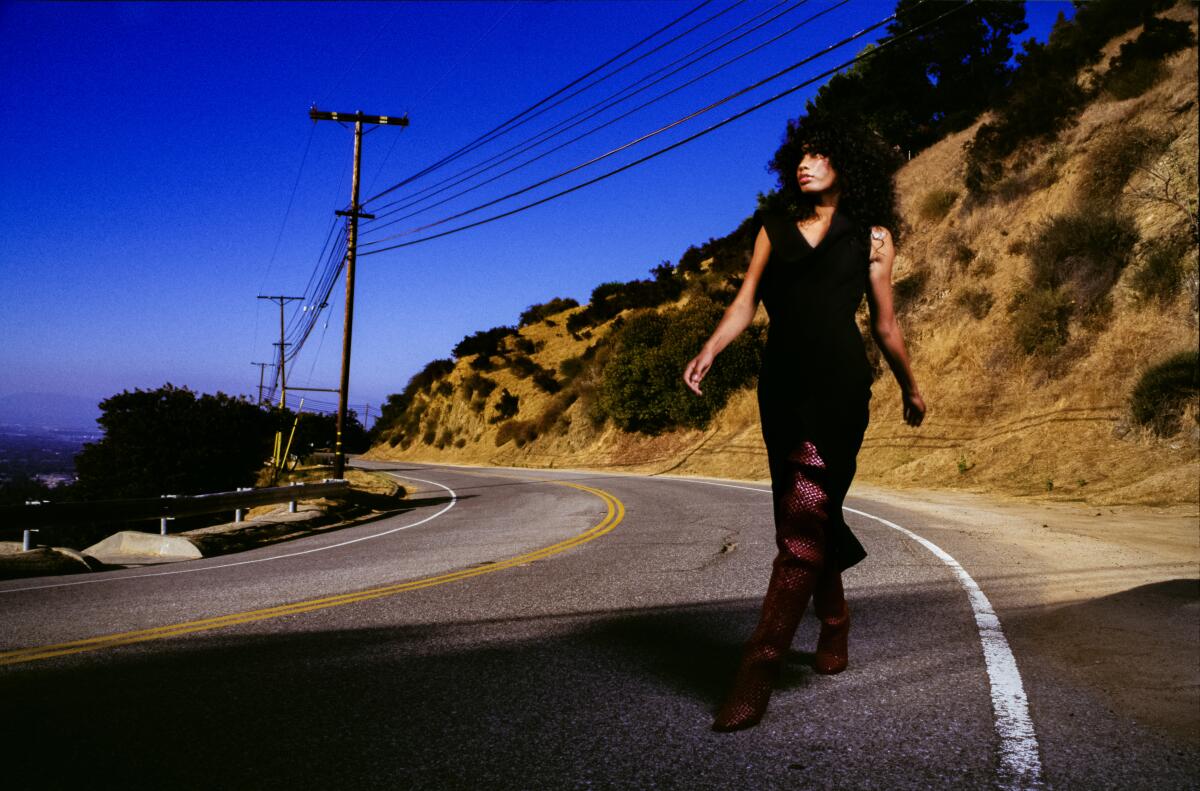An earthquake warning 6,000 miles away
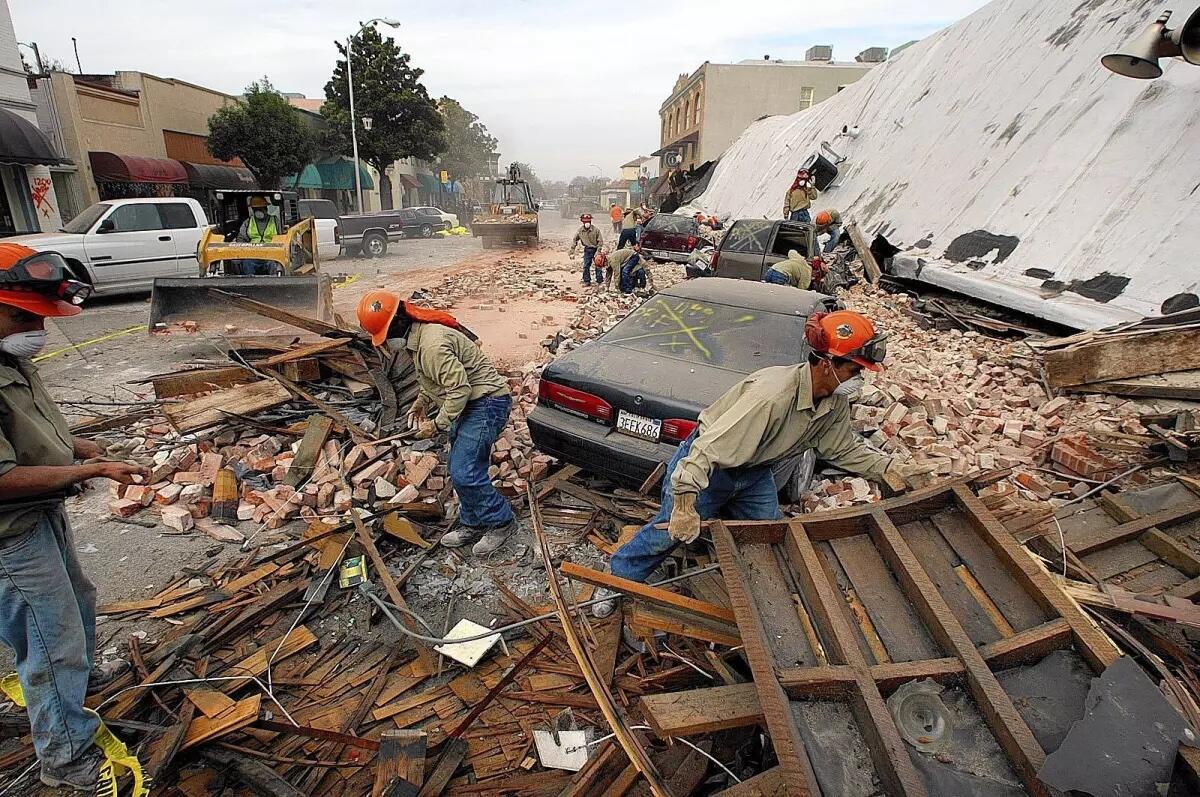
- Share via
Good morning. It’s Friday, Sept. 15. Here’s what you need to know to start your day.
- Moroccan earthquake highlights California’s vulnerability
- Striking workers may soon be able to collect unemployment benefits
- The best fast-food soft serve ice cream
- And here’s today’s e-newspaper
Sign up for Essential California
The most important California stories and recommendations in your inbox every morning.
You may occasionally receive promotional content from the Los Angeles Times.
An earthquake warning 6,000 miles away
A magnitude 6.8 earthquake rocked Marrakech, Morocco, a week ago. More than 2,900 people have died (rescuers are finding more remains every day), and more than 5,500 are injured. Countless more are missing.
Most of the buildings destroyed in the earthquake were made of brick or unreinforced masonry adobe. Buildings in Morocco are designed to keep cool in extreme heat, but the building materials are vulnerable in an earthquake. And that underscores a harsh reality: Crumbling buildings are what make earthquakes deadly.
Morocco’s destruction is “very similar to what can happen with brick buildings in California,” Craig Chamberlain, president of the Structural Engineers Assn. of Southern California, told my colleagues Rong-Gong “Ron” Lin II and Summer Lin.
California’s older buildings could crumble if a similar earthquake struck
After the 1971 San Fernando earthquake killed 64 people and damaged hundreds of buildings, codes changed for buildings to require more steel and wood (which can bend and give as the earth moves underneath) along with other earthquake-safe building approaches. But so many buildings are grandfathered in to older codes.
More than 1,000 concrete buildings are still spread throughout Los Angeles.
[Read more: How concrete buildings fail in an earthquake]
L.A. County owns 33 of those buildings, including its administration building, coroner’s office and public health department headquarters. Hundreds of more at-risk buildings fall on the San Andreas, San Jacinto, and Cucamonga fault lines, and have never been retrofitted to withstand a large earthquake.
Local governments are requiring more earthquake retrofitting, but it’s not exactly happening fast
The L.A. County Board of Supervisors has taken steps toward a mandatory earthquake retrofit order, asking officials to prepare new rules that would require brittle or collapsible buildings owned by the county (plus any in unincorporated areas) to be retrofitted within 10 years of going into effect. They also asked for an inventory of structures vulnerable to earthquakes, known as “soft-story” residential buildings.
Santa Monica has also given a 10-year deadline by 2027 and West Hollywood a 20-year one till the 2040s.
But across the area, many private buildings still need retrofitting too. People are nervous about the price tag and who should shoulder the burden. A retrofit can cost up to $130,000 for a wooden apartment and millions for a larger concrete building. In 2016, the L.A. City Council approved a 50-50 sharing plan in which building owners can pass half the retrofit costs to tenants through rent increases over a 10-year period.
I asked Ron, who has covered earthquakes for the L.A. Times for years, what it will take to pressure more cities to retrofit and enforce laws and for owners to strengthen their buildings. He pointed to one major incentive: lawsuits.
The families of two women who died after the 2003 Paso Robles, Calif., earthquake received $2 million when the jury found the property owners negligent for not retrofitting the building sooner, even though the deadline to do it had not yet passed.
More from us:
- Politics have plagued the humanitarian aid efforts in Morocco, our Middle East Bureau Chief Nabih Bulos wrote.
- If you think the earthquake damage you see in Turkey can’t happen here, think again, seismologist Lucy Jones wrote for our Opinion section.
Today’s top stories
The legislative session in Sacramento ended late last night. Here’s what happened:
- Lawmakers passed a bill to raise the minimum wage for health workers to $25 after a series of last-minute amendments and concessions.
- The Legislature voted to make the state the first in the nation to include housekeepers, nannies and other household staff in laws requiring health and safety protections. The governor has vetoed similar legislation before.
- Gov. Gavin Newsom’s resolution calling for a constitutional convention of the states to consider a new amendment on gun control passed easily.
- A bill to make it easier to delete online personal data and one requiring pharmacies to report prescription errors will also head to Newsom’s desk.
- Condoms, gender-neutral bathrooms and an end to some suspensions? These are three ways California lawmakers want to make schools a haven for all.
More workers prepare to strike as labor fallout continues
- Striking workers could become eligible for unemployment benefits if Newsom signs a bill lawmakers passed Thursday night. At a recent event, Newsom expressed concerns about the unemployment fund’s debt, but didn’t say whether he would veto the bill.
- Tens of thousands of Kaiser Permanente workers voted to authorize a strike against the HMO if no agreement is reached with their unions by the end of September, union officials announced Thursday.
- 13,000 workers for Detroit’s Big 3 automakers went on strike over wages and benefits.
- Hollywood strike and High Holy Days: L.A. Jews seek solace amid tough times.
- The Alliance of Motion Picture and Television Producers said that it planned to schedule a meeting with the Writers Guild of America next week, the first genuine sign of movement in the labor standoff since last month.
A legislative fix to California’s crumbling insurance market failed to materialize
- As insurance companies pull out of the state, lawmakers scrambled this week to fix California’s home insurance mess and failed. But change could still be coming.
More big stories
- An LAPD assistant chief is being investigated over allegations he stalked a subordinate with whom he was romantically involved, sources say.
- Hunter Biden was indicted Thursday on federal firearms charges after a long-running probe.
- A massive crack has opened up on a Yosemite National Park cliff face, forcing officials to close a popular trail.
- Malibu’s celebrity hot spot Nobu is facing a lawsuit alleging sexual harassment and discrimination against hostesses.
- Julio Urías’ arrest puts a spotlight on Exposition Park’s tiny police force.
Get unlimited access to the Los Angeles Times. Subscribe here.
Commentary and opinions
- Robin Abcarian: Do what’s right for the planet or for your pocketbook? The dilemma of fast fashion.
- Op-ed: How Rosh Hashana encourages us to fight the loneliness epidemic.
- Editorial board: The next generation is right to demand an end to fossil fuels.
Today’s great reads
Actors and writers aren’t just striking. They’re grieving too. Because union members are choosing to strike, they may hesitate to describe their experiences as grief, “and yet, that’s exactly what it is. They’re losing out. They’re feeling a loss every single day not doing the thing that they love,” says grief support specialist Rebecca Feinglos.
Other great reads
- Lack of fentanyl knowledge deters families from talking about it. Here’s how to start the conversation.
- The race is over, the Dodgers’ Mookie Betts should be National League MVP.
- The Beyoncé and Taylor Swift reporting jobs at USA Today have sparked backlash from news reporters — here’s why.
- They called her Trouble, because she was. But the staff at a unique L.A. park will miss this bison
How can we make this newsletter more useful? Send comments to [email protected].
For your downtime
Going out
- 🩰 Leap into National Dance Day with these top dance events in SoCal.
- 🎤 L.A. hardcore band Zulu, headlining the Roxy tonight, champions Black power and transcendence, in a scene not known for either.
- 🍦Yes, fast-food soft serve is still the best soft serve. These are the top seven brands, ranked.
- 🍛 Experimental Korean restaurant Baroo reopens with “life cycle” tasting menu downtown.
Staying in
- 📖 Jill Duggar details her family’s reality TV finances in her memoir, “Counting the Cost.”
- 📺 “The Other Black Girl” on Hulu uses humor and horror to tackle workplace racism.
- 🦐 Here’s a recipe for grilled prawns with tom yum sauce.
- ✏️ Get our free daily crossword puzzle, Sudoku, word search and arcade games.
And finally ... a great photo
Today’s great photo from photographer Zamar Velez is part of The Times’ “Image Makers” series that celebrates the homegrown fashion luminaries who are designing a global fashion future built from the L.A. that was.
In the photo, Velez re-envisions Mulholland Drive as a fashion runway.
Have a great day, from the Essential California team
Helen Li, reporting fellow
Kevinisha Walker, multiplatform editor
Laura Blasey, assistant editor
Karim Doumar, head of newsletters
Check our top stories, topics and the latest articles on latimes.com.
For the record: The Sept. 7 edition of the newsletter described the FAIR plan as state-sponsored. It was created by the state, but is managed by a private association of state-licensed insurers.
Sign up for Essential California
The most important California stories and recommendations in your inbox every morning.
You may occasionally receive promotional content from the Los Angeles Times.
